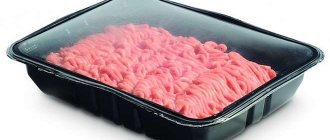If you want to get a detailed answer to the question, read below>>>
How and how long to store urine for analysis is not an idle question. It is often encountered by parents of babies under one year old and those who, for health reasons, are forced to undergo a certain type of test. How to store urine is more or less clear. In Soviet times, ordinary glass jars for mayonnaise and baby food were used.
Pharmacies now offer convenient disposable plastic containers with a tight-fitting lid. Glass bottles with a scale are still used - they are usually issued in hospitals. Let's figure out which container to give preference to and how long the sample can be stored.
In a refrigerator
Blood and urine for laboratory review cannot remain in a container or test tube for a long time. Human organic matter is a perishable product, so it is better to collect it right before delivering the container to the hospital. Since after some time biochemical reactions begin to occur in the container due to the breakdown of protein, salts, and oxidation. If you don’t think about how to store the collected urine before donating it, then after 120 minutes it will lose its original properties, so it can only be left for a long time in the refrigerator.
Material for general research should be kept in a refrigerator for no more than 24 hours.
To increase the shelf life, the temperature in the refrigerator compartment must be at least +4°C..
How long can biomaterial be stored for delivery, depending on the type of chemical test:
- General. It is necessary to collect in the morning, immediately after waking up, on an empty stomach. It is recommended to deliver to the laboratory within 60 minutes. The shelf life in this case is the shortest, so the effectiveness of this method is low;
- Chemical composition testing within 24 hours. Daily urine can be left in the cold, but the next day it must be taken to the clinic;
- For testing according to Nechiporenko, it is recommended to collect the first morning stream and give the container for study for an hour.
- Collection of organic matter for research according to Zimnitsky is carried out several times a day in sterile containers. They can be kept in the refrigerator for no more than a day from the moment the first sample is taken.
- To conduct a bacterial culture test, urine cannot be collected in advance and stored. This method involves transferring fresh organic matter to the laboratory, since many bacteria may die over time.
- For a pregnancy test, urine collected in the morning on an empty stomach is taken. Only the first portion contains the maximum concentration of the hCG hormone.
- To detect alcohol and drugs in urine, the method most often used is chemical toxicological testing (CTI), which does not imply long-term preservation of the liquid, since the period for detecting use is different for each person. It is not recommended to store it under any conditions.
Animal urine for analysis is allowed to be placed in the refrigerator for a short time, since collecting cat urine is very difficult and it is almost impossible to do this right outside the clinic doors. It is better to collect raw materials from a cat or dog for a clinical test at a veterinarian's appointment by puncturing the bladder immediately before testing. Most often this is done before surgery to determine the presence or absence of an inflammatory process in the body.
You can also leave stool in the refrigerator for some time for analysis. It is better to collect in the morning.
Is it possible to store urine for longer than the specified time?
Freshly collected urine is the best option for analysis, but it is not always possible to correctly collect and store it. Tests are often prescribed for children, infants, and patients who have serious problems with urination.
The work schedule also makes its own temporary adjustments. In these cases, it is worth remembering that the container with urine can be kept in the refrigerator for a certain time. There it should only cool down a little, but not start to freeze. The optimal temperature to preserve the properties of the material is +4 degrees. Such conditions in the refrigerator are created on the doors or on the shelf at the very bottom of the chamber.
Important! If the urine has been stored in the refrigerator since the evening, this point should be indicated to the laboratory assistant.
In some cases, to determine the full picture of the disease, patients need to collect all their urine per day. In this case, there is no way to do without storing it for more than 2 hours. Special preservatives will help preserve the properties of urine.
The following substances can be added:
- Acetic acid (glacial). No more than 5 ml of liquid for the entire volume of urine collected per day.
- Toluene. Use no more than 2 ml for the entire container. Such a substance can lead to sediment after several hours.
- Boric acid. Add in the following doses: for every 100 ml, 3 granules.
- Thymol. Use 2 crystals per 100 ml volume of urine.
How to collect and store urine from newborns
The urine of a child under 1 year of age has the property of rapid oxidation, so storing organic liquid of newborns is not recommended.
Basic methods of taking samples from infants:
- Using a regular package;
- Using a special urinal;
- Any sterile container.
It is not recommended to leave an infant’s organic matter in a jar for more than 120 minutes before transferring it to the laboratory. Organic samples from the newborn should be kept in a sterile container or tube with a tightly closed lid.
Results
There are several types of assessment of the biochemical composition and physical properties of urine. The necessary analysis is prescribed by the doctor depending on the suspected disease. To obtain accurate research results, you must comply with:
- mandatory genital hygiene before urination:
- conditions for urine collection determined by the type of analysis;
- rules for storing biomaterial at home and its delivery to the laboratory.
Urine collected in a sterile container and stored for no more than 2 hours is allowed to be submitted for examination. Under the influence of light, high or low temperature, or contact with air, urine changes its qualities, which distorts the final results of microscopy. This is especially true for the overly sensitive urine of young children.
When carrying out special tests (Zimnitsky test and three-glass test), urine can be preserved by cooling. Freezing biofluid samples is strictly prohibited. The accuracy of the results directly depends on the patient’s conscientious attitude towards the rules for collecting and storing the biofluid intended for analysis.
Impact on the accuracy of analysis results
Material collected from a child cannot be kept in the refrigerator for as long as that taken from an adult: after a short time, ammonia forms in the child’s urine. The presence of this substance may indicate a non-existent pathology.
The doctor who has issued a referral for a test in the laboratory must explain to the patient how long samples can be stored and under what conditions.
The following factors may affect the accuracy of the results:
- entry into the container of environmental elements, bacteria, and other foreign substances;
- if the child is not washed before collection, microorganisms accumulated on the external genitalia can spoil the results;
- incorrect content: more than 120 minutes at room temperature and more than 24 hours in the refrigerator.
Each method of laboratory research has its own algorithm for collecting urine: for example, for a general analysis it is recommended to collect the middle stream, and for identifying the hCG level - the first.
Features of collection and storage in children
Collecting urine from older children is not difficult, since it is performed in accordance with the recommendations of doctors for adult patients.
- Prepare a sterile container or glass jar.
- Lift the child out of bed, wash the external genitalia with warm water and a neutral detergent.
- Wipe the urogenital area dry with a towel or napkin.
- Make him sit on the toilet and force him to release a small amount of urine.
- Place the container near the urethra and repeat the process.
- Flush the rest of the urine into the toilet.
It is much more difficult to collect material for research in a child under one year old, since he begins to urinate immediately after undressing. Therefore, you need to prepare the container in advance. This could be a test tube, jar, container or deep saucer.
Proper Ways to Obtain a Urine Sample
Doctors do not recommend draining the resulting urine from the pot or squeezing it out of a diaper or diaper. This may lead to infection with bacteria, which will affect the reliability of the results. Here are some options for proper collection.
Use a glass container
It must be thoroughly washed and pre-sterilized with steam. After waking up, the child is washed and the prepared container is presented to him. You can turn on the water, the noise of which will provoke the release of urine.
Perform the procedure on a girl
After sleep, carry out hygiene measures, then lay her on the changing table and place a plate under her bottom. Lightly touch the perineum with a swab dipped in warm water to trigger a reflex.
Collect urine from a boy
A simple procedure that does not require specific skills. After waking up, wash the urogenital area and substitute any of the above containers. You can also use a condom.
Use a urine bag
It is a plastic bag with a hole in the middle. There is an adhesive tape along the edge, with which the device is attached to the body around the genitals. After urination, pour the resulting portion into a prepared container and transport it to a medical facility. The urine collector does not cause an allergic reaction, and allows you to correctly prepare a urine sample for diagnosis.
We determine the unsuitability of the material for analysis
If urine remains in a collection container for more than 24 hours, it becomes unsuitable for chemical study. It should also be taken into account that the laboratory does not begin testing immediately after delivery.
Signs of spoiled raw materials:
- sediment at the bottom of the container;
- cloudiness of the liquid.
The results often turn out to be false due to the fact that the organic substance loses its properties if improperly stored or transported for a long time. In a warm room, bacteria form in urine, salts are deposited, and sediment forms.
How to understand that urine is unsuitable for analysis
A sign of unsuitability of urine when testing for enzymes and microorganisms will be turbidity and sedimentation. They indicate that irreversible chemical processes have begun in the liquid, disturbing the original composition. For daily samples and when stored in the refrigerator, a change in consistency and precipitation is normal.
The shelf life of urine depends on the test performed. To keep the material suitable for analysis, it is necessary to take into account all the doctor’s recommendations for storage, collection and timing of fluid donation.
Rules and recommendations
In order to obtain an informative diagnosis, you need to know how long organic liquid can be stored before transfer to the clinic:
- to obtain true results, it is recommended to collect organic material immediately before submitting it to a laboratory, for example, to Invitro;
- it is important to understand how long urine collected from infants and adults can be stored;
- For some types of tests, biological fluid can be kept in the refrigerator, in a tightly closed container, for no longer than 24 hours.
Rules to follow before taking urine:
- completely eliminate alcohol from consumption within 24 hours;
- postpone taking medications that affect the composition of the fluid;
- do not eat carrots, beets and apples the day before;
- Before collecting, it is important to wash thoroughly, without using chemicals.
- The container must be absolutely sterile.
- For some types of research, preservatives can be added to the donated liquid to extend the shelf life:
- thymol;
- boric acid;
- acetic acid;
- toluene.
In this case, the main thing is not to overdo it with the preservative, otherwise the information content of the results will suffer.
Due to the natural oxidation process, the color of the raw materials in the jar may darken over time. Such a change is not an indication of unsuitability.
Daily diuresis
Daily urine is collected in one three-liter container, prepared independently (sterilized and dried). An alternative could be a large medicine container with a capacity of 2.7 liters. The first morning portion of urine is not subject to collection.
Can stool samples be stored in the refrigerator?
The countdown begins with the second emptying of the bladder. The results of all urinations are drained into a container.
Collected urine should be stored exclusively in the refrigerator, without freezing. A mandatory condition for safety is a sealed lid on the container with biomaterial.
After 24 hours, the biofluid must be mixed, the resulting volume measured and recorded. From the total amount, separate a portion of urine, placed in a standard (small) sterile container, and immediately deliver it to the study site.
Hormones
The tests that are taken most often are: cortisol, C-peptide, metanephrines and normetanephrines, adrenaline, norepinephrine, dopamine, serotonin, histamine, etc.
To collect biomaterial, you must first purchase a special kit for collecting daily urine from the CITILAB medical center (a dark container with 3-liter graduations, a test tube with a beige cap, an adapter, if necessary, as well as instructions for collecting daily urine).
Attention: For some studies it is necessary to use a preservative, which can be obtained from CITILAB. The container with urine should be stored in the refrigerator at 4-8 °C during the entire collection time! Avoid exposing the sample to light. Keep urine out of the reach of children, as concentrated acid may be used as a preservative when collecting 24-hour urine. It is unacceptable to send urine for testing in containers not intended for these purposes, since residues of the ingredients contained in them can significantly distort the results of the analysis.
Collection rules:
According to Zimnitsky
The day before collecting urine according to Zimnitsky, it is recommended to avoid intense physical activity, not drink alcohol, and go to bed at your usual time.
To collect biomaterial, you must first purchase special kits from the medical center (containers, test tubes with colorful caps, adapters in the amount of 8 pieces, as well as instructions).
Collection rules
*Follow the detailed instructions included with the urine collection kit.











